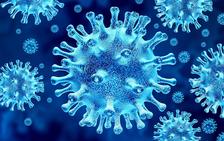The biomolecule beamline P11 at DESY's X-ray light source PETRA III. (Credit: DESY, Heiner Müller-Elsner)
Scientists around the world are intensively searching for starting points for an active substance against the coronavirus 'SARS-CoV-2'. At DESY a series of now starting experiments focuses on the three key proteins of the pathogen as possible drug targets. If this investigation is successful, it could considerably shorten the search for a medicine to stop the new coronavirus. So far, there is no cure for the infection.
The study is examining several thousand existing drugs to see whether they also help against the new corona virus. “We have just received the first plasmid to produce a first protein that plays a role in the reproduction process of the virus,” reports DESY researcher Alke Meents. “With this plasmid, we will try to find active ingredients that bind to the corresponding protein.” The corresponding X-ray measurements, for which DESY is restarting its PETRA III research light source, are scheduled to begin in just a few days.
Viruses cannot reproduce on their own. To do this, they hijack cells of their host, introduce their own genetic material into the cells and ‘re-program’ them to produce new viruses, which in turn infect other cells. Proteins play an important role in this cycle. If one of these proteins can be inhibited, this might stop the cycle and the virus can no longer reproduce – the infection is cured.
In their search for such a compound, the scientists at DESY, the Universities of Hamburg and Lübeck and the Fraunhofer Institute for Molecular Biology and Applied Ecology (IME) are following the approach of structural biology: With the bright X-rays from DESY's PETRA III research light source, the three-dimensional spatial structure of proteins can be resolved with an accuracy of 0.1 nanometers. “That is ten millionth of a millimeter. Such a resolution makes it possible to see the individual atoms of the molecule,” says Meents.
The team is examining around 3700 active compounds from the IME's database “Screening Port” to see which of them bind to any of the three proteins. “If we find a substance that binds particularly well, researchers at the University of Lübeck will investigate in the laboratory whether it also inhibits protein activity,” explains Meents. In a third step, the Bernhard Nocht Institute for Tropical Medicine in Hamburg plans to test in cell cultures whether the substance inhibits or even prevents the virus from multiplying.
“The database of the Screening Port contains 3700 active substances that have already been approved for the treatment of humans or are in different stages of testing,” says Meents. “If we should come across a suitable candidate for combating SARS-CoV-2 among them, it could be used in clinical trials much more quickly than in usual drug development. This could save months or even years.”
However, it is not possible to foresee when and if this search will be successful. “Normally such a project is scheduled to last about two years,” Meents reports. “If you do it vigorously, you can speed it up. And if we should have a lucky shot at the beginning, we might come up with a first potential drug candidate after just a few weeks, which can then be tested in cell cultures and later in animal models. Still, our experiments are at the very beginning of drug development and this is usually a long process.”
(from DESY news)









